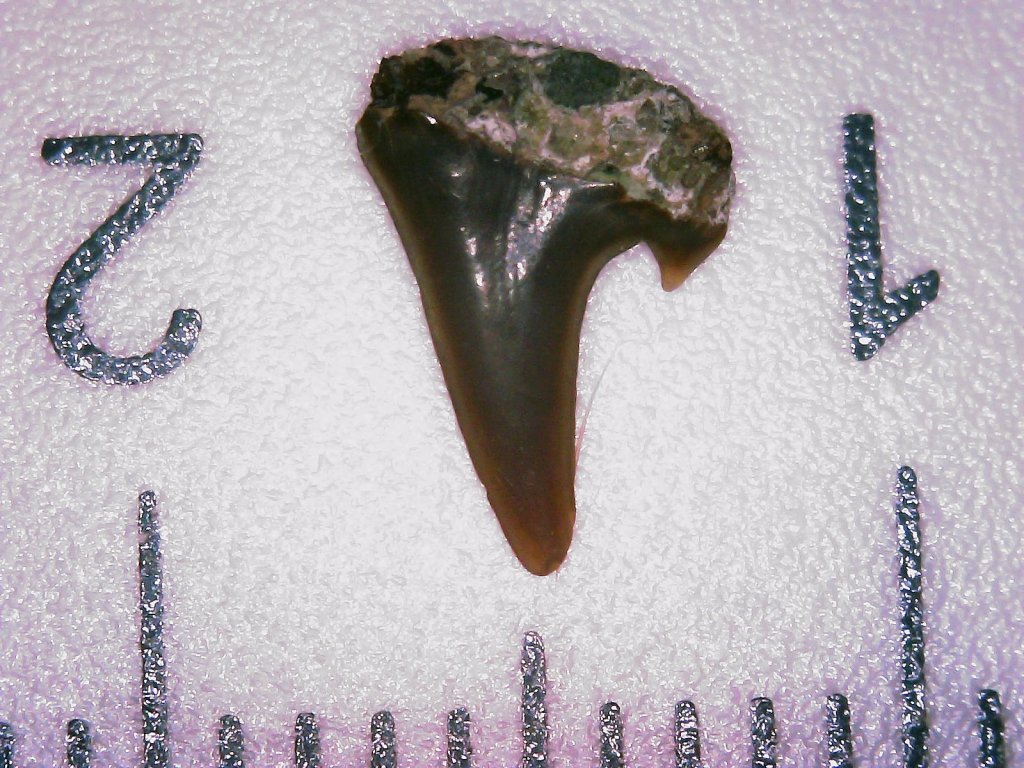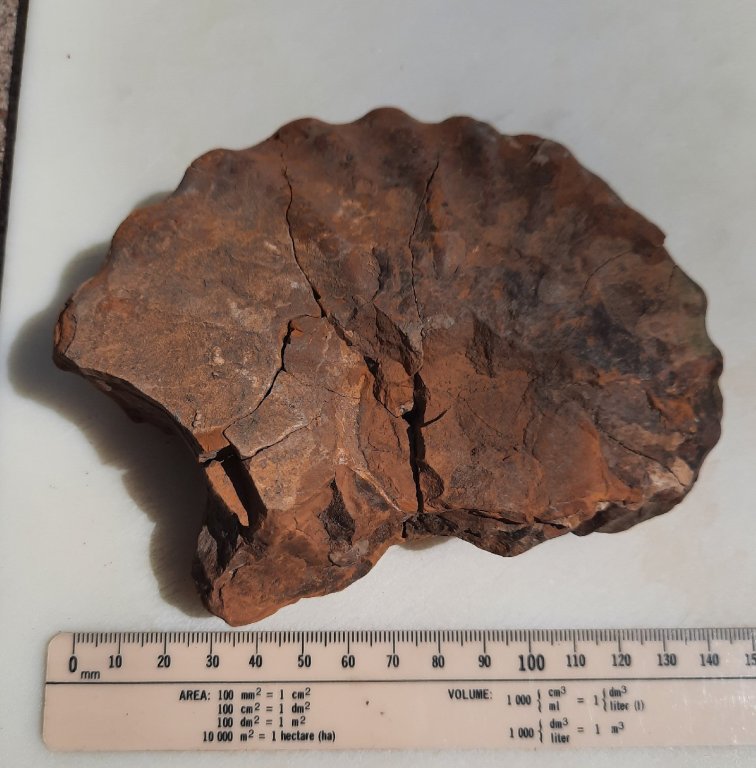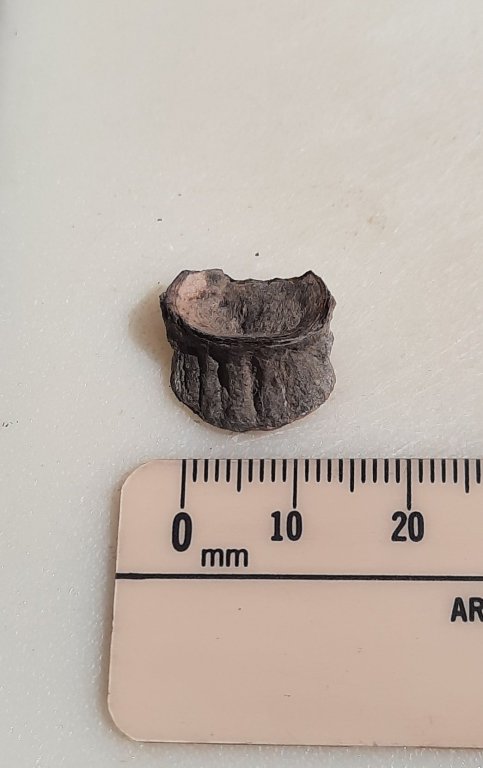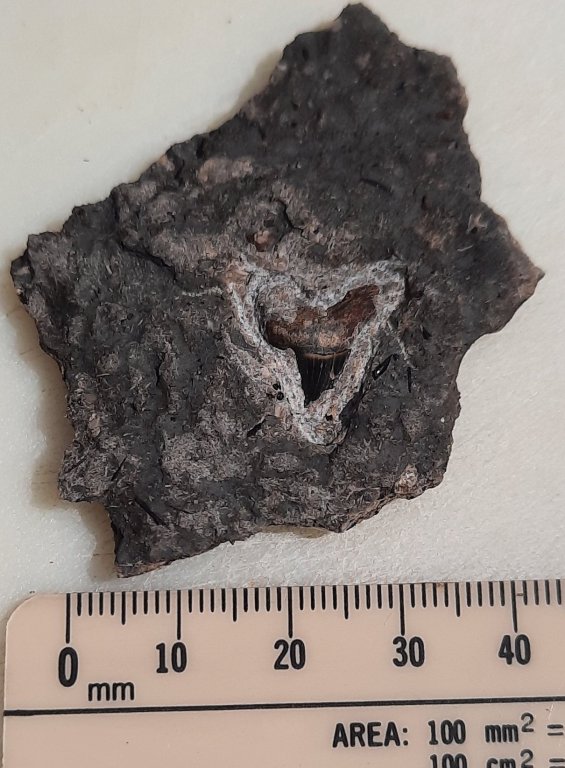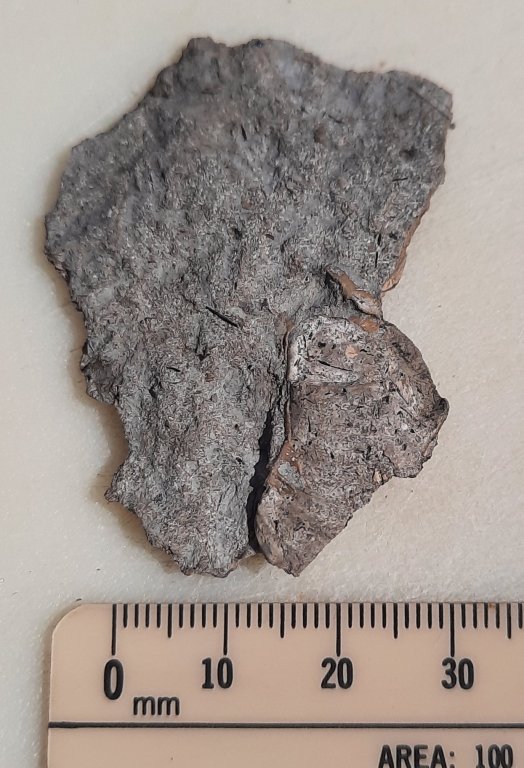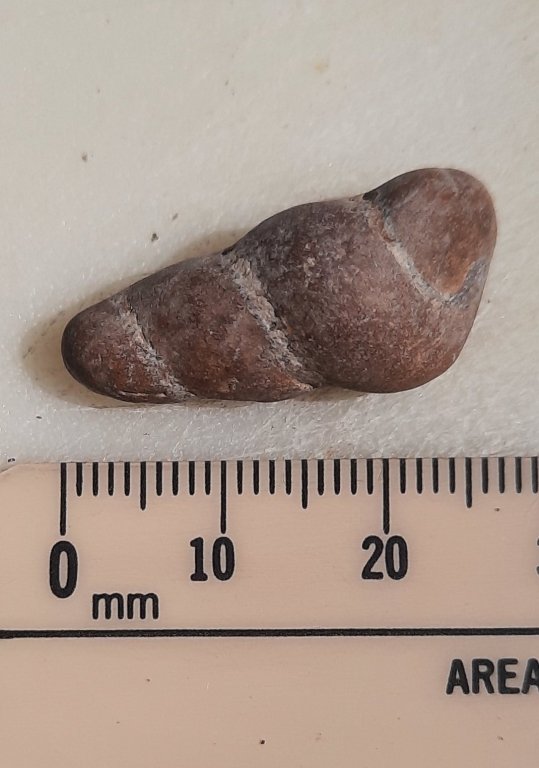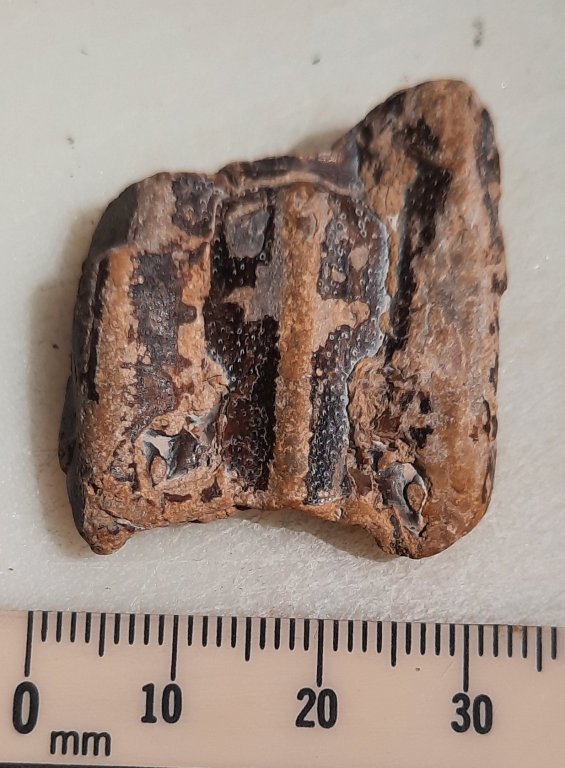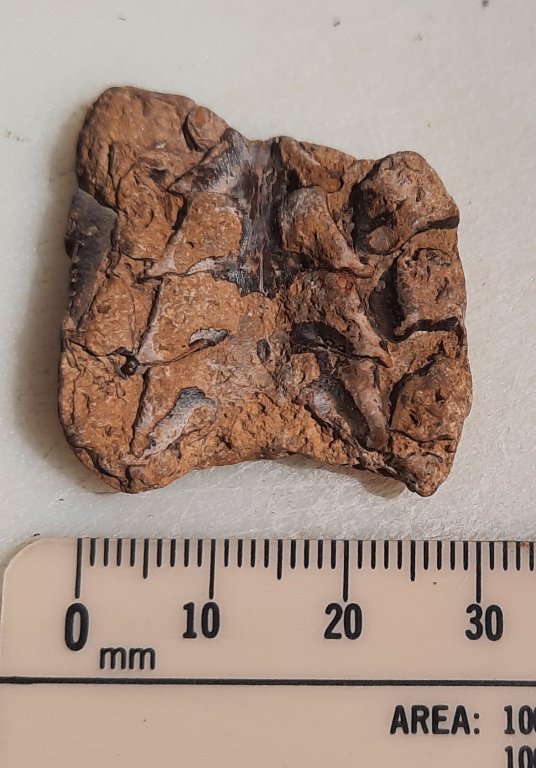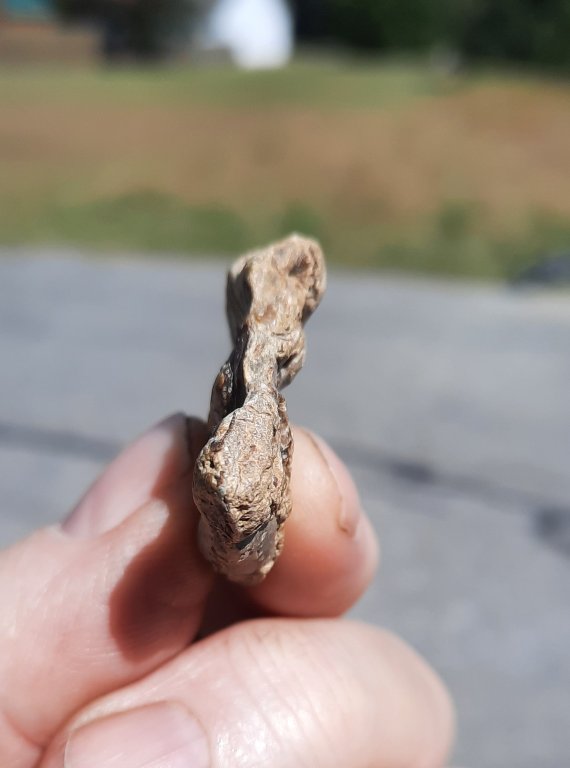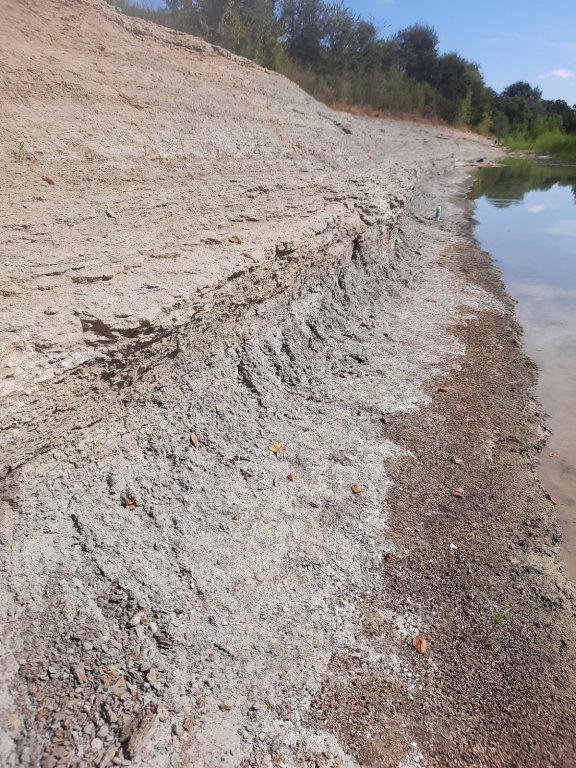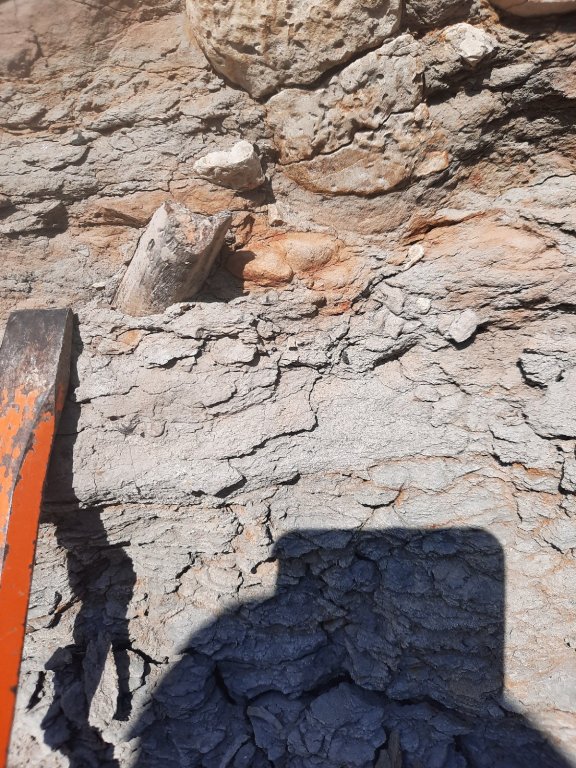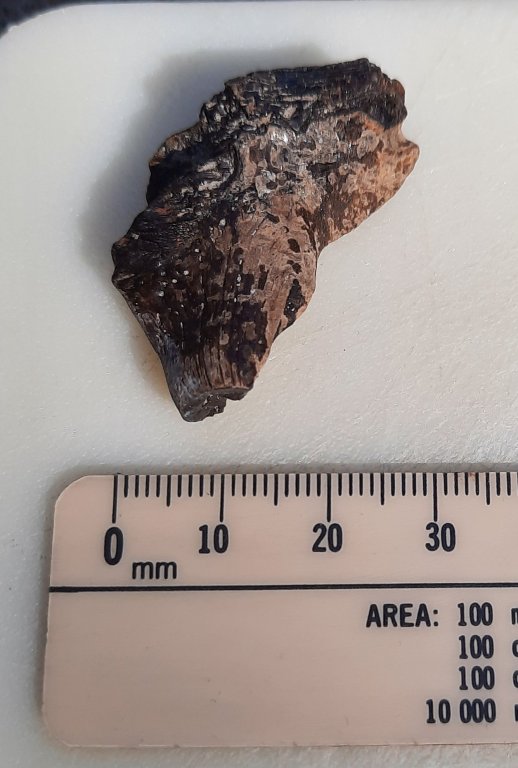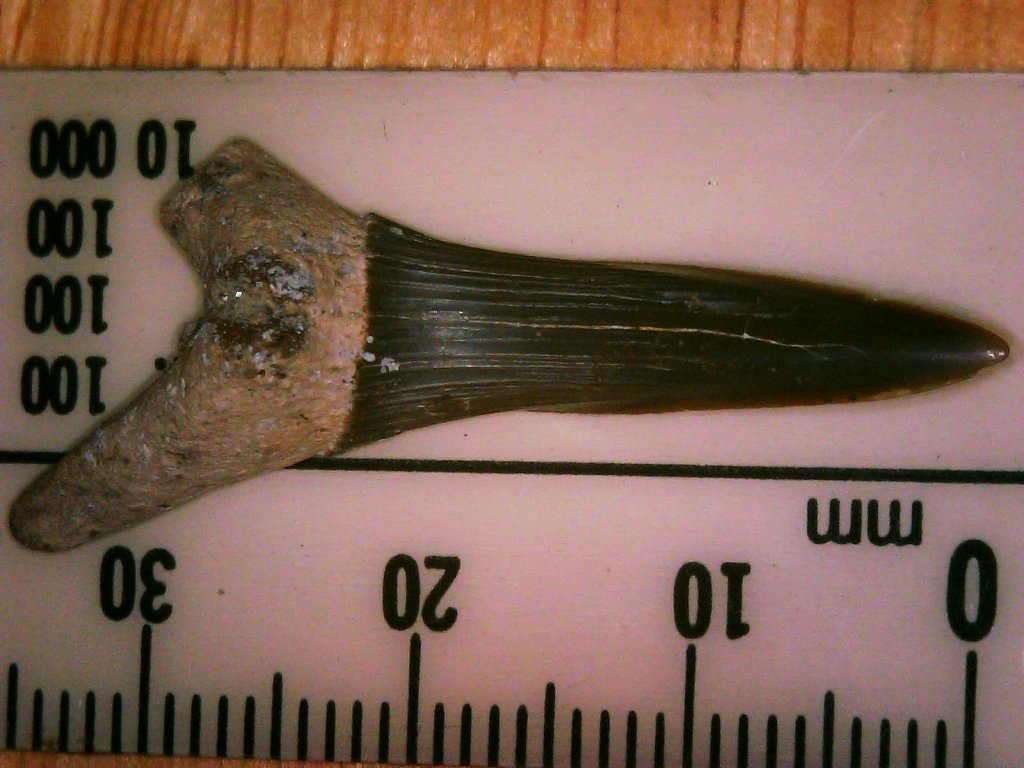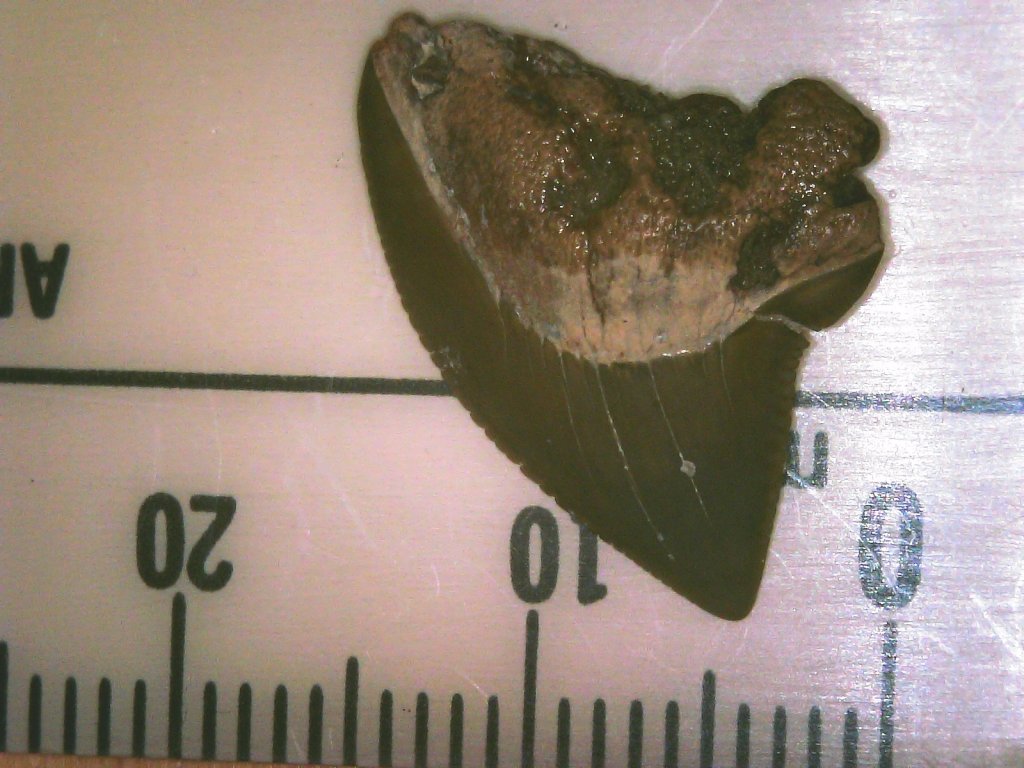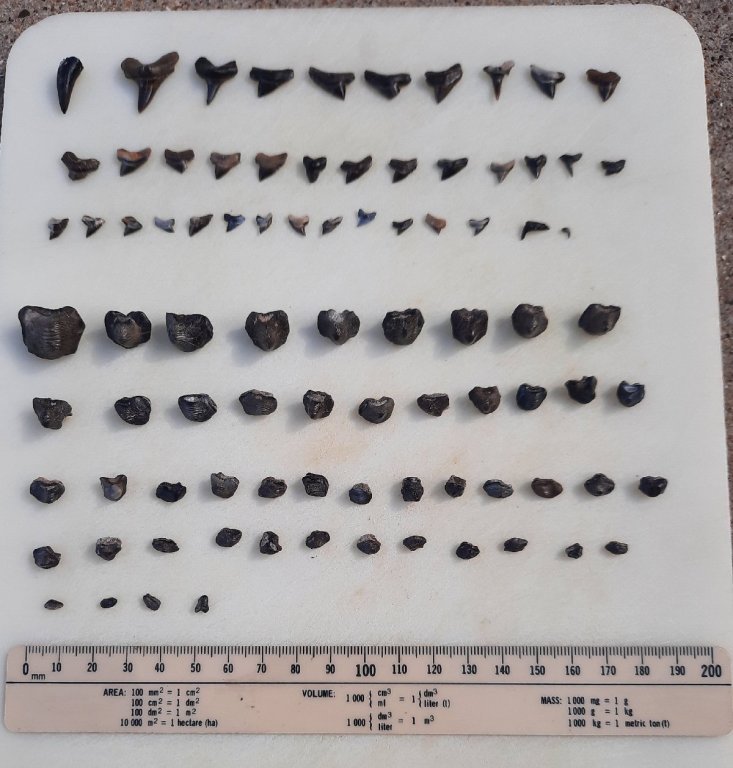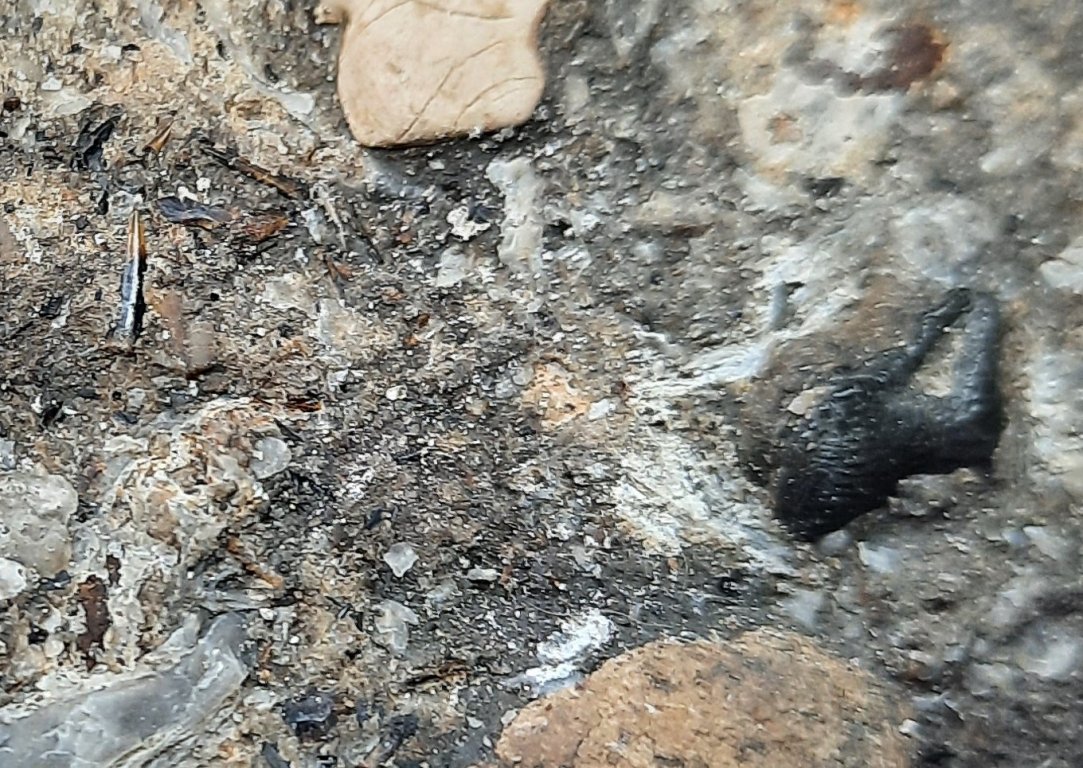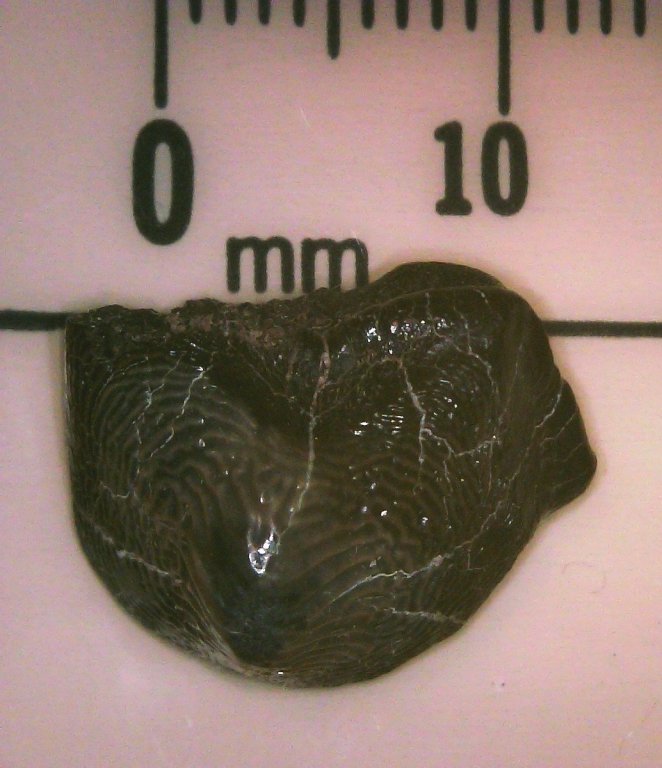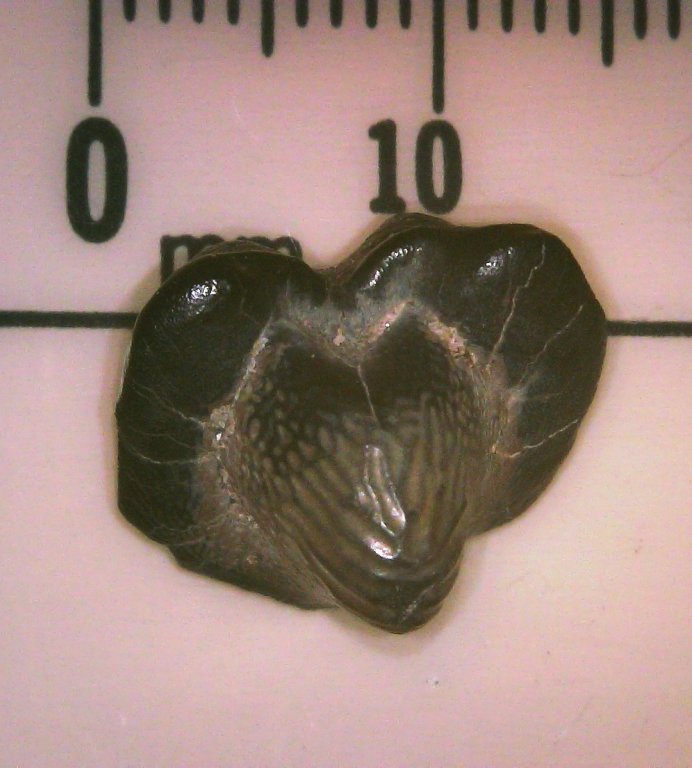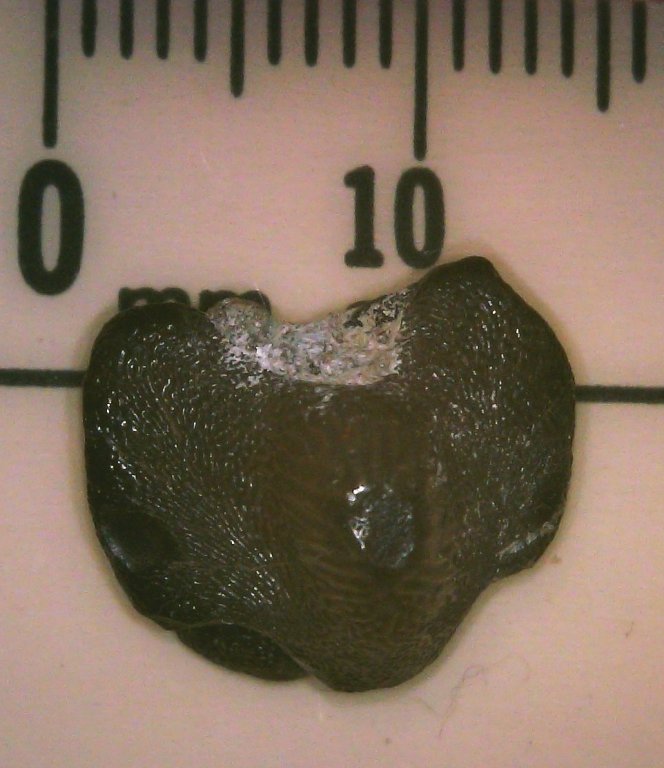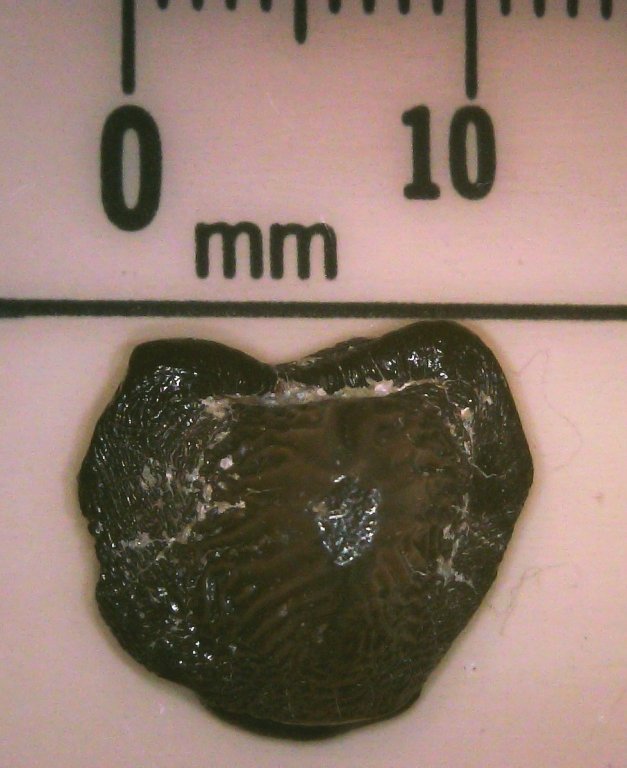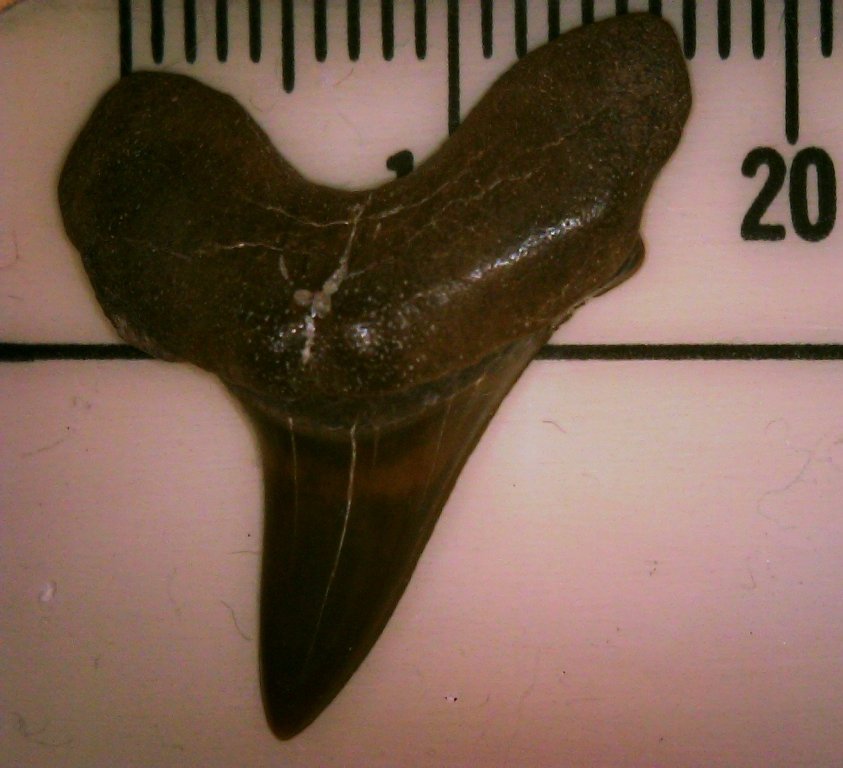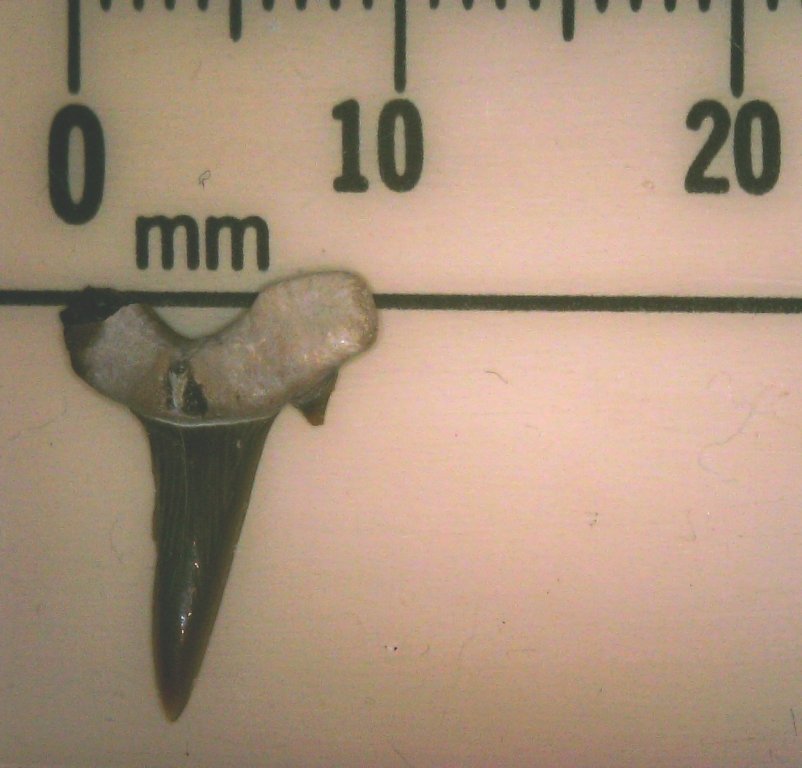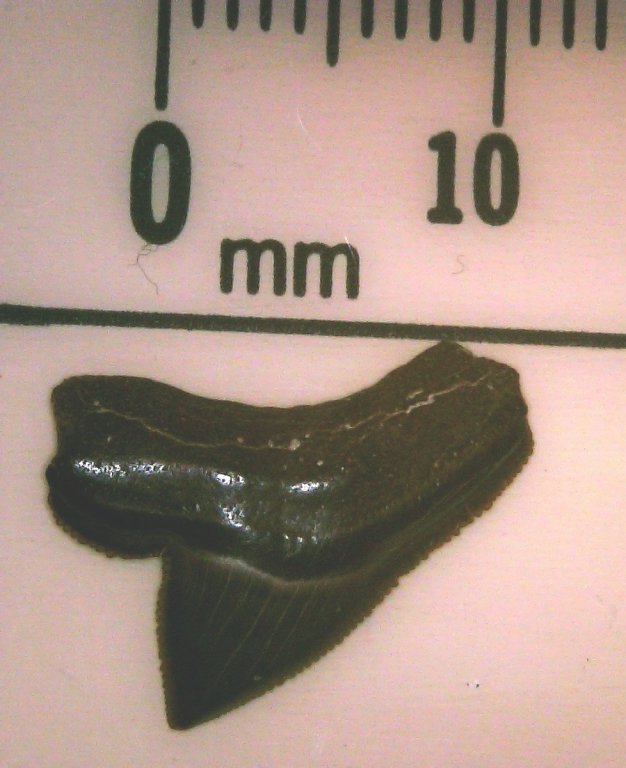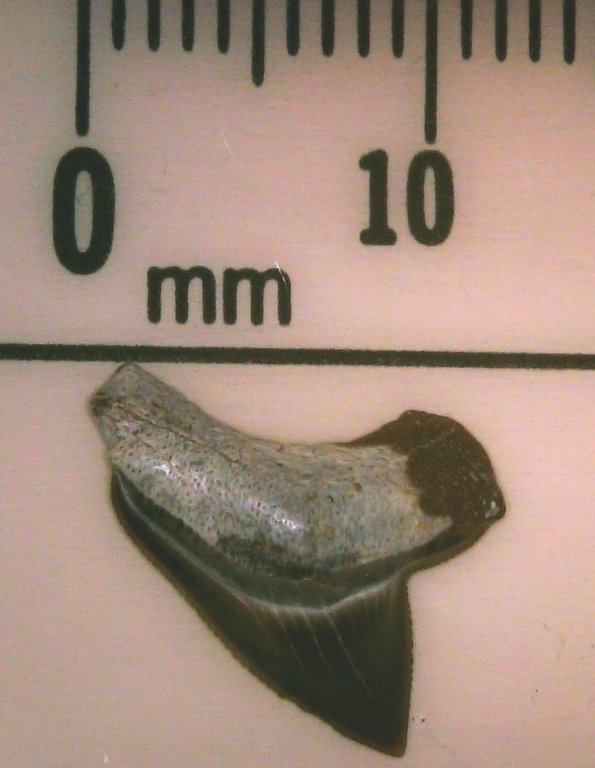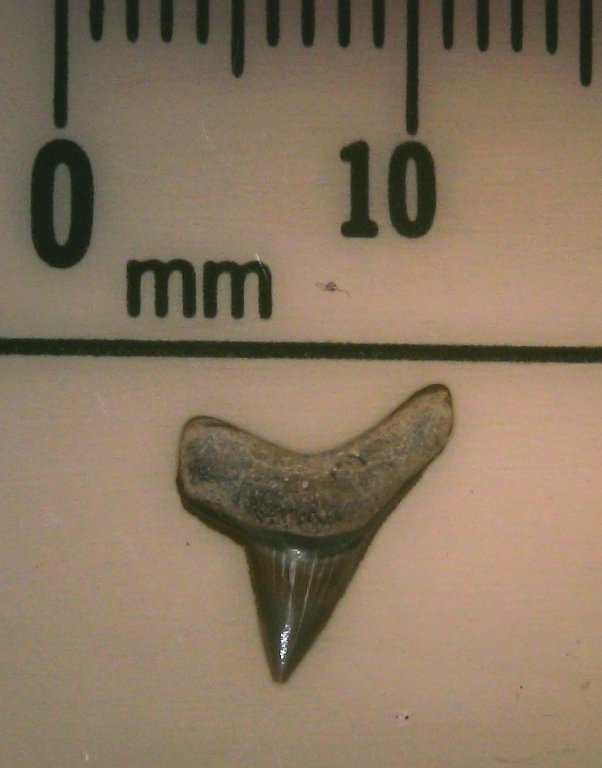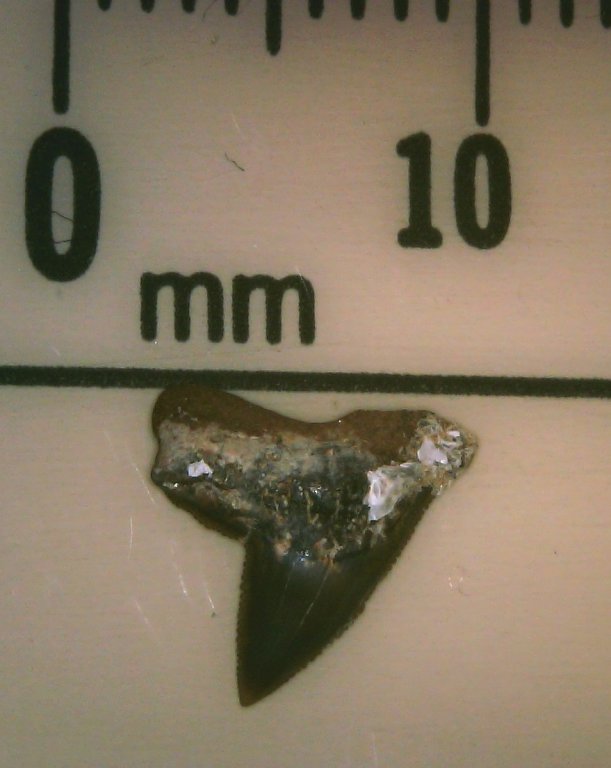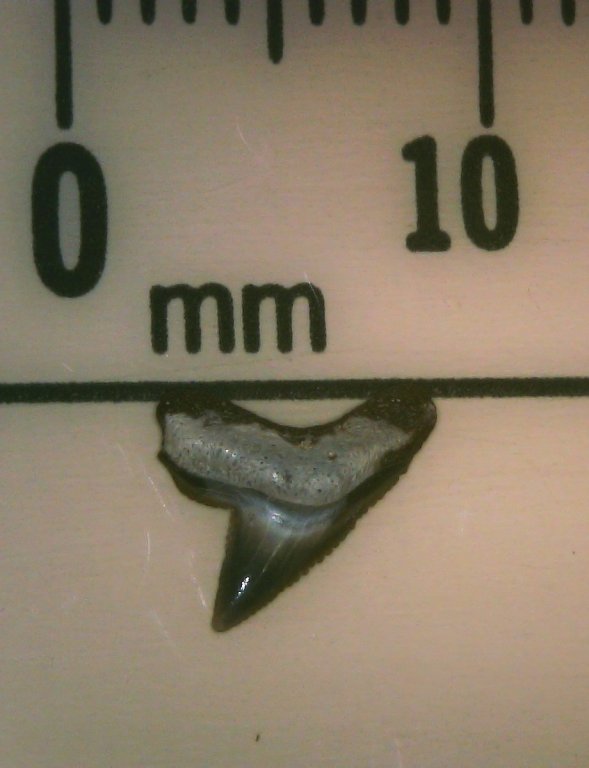I made a fossil hunting trip to a creek in East Texas yesterday and brought home a nice collection of very small teeth. It was the first time I’ve ever had success finding fossils less than an hour drive from home, and I was pretty pleased about that. This was a Kincaid Formation outcrop. The teeth came from a shell hash that was on top of some very hard limestone. Some of the matrix which contained the teeth was the same gray as the limestone, and some of it was a tan color.
I looked at a lot of identical looking matrix which had nothing but shell fragments in it, but once I found teeth, there were more teeth nearby. I had to chisel into the matrix to find teeth, so as I searched for teeth, I just kept tossing matrix pieces into my backpack to take home. So now I have a bunch of matrix to go through. I’m looking forward to doing that in my air conditioned house rather than outside in yesterday’s 98 degree temperatures. LOL. I made an early day of it after it got so hot, heading home before 1:00 in the afternoon. I’ll update this post after I’ve gone through all the matrix.
Here are some matrix pieces I brought home. The upper two are the same gray as the limestone they were on top of. But there was also some tan matrix mixed in, like those two bottom pieces. Both had teeth in them. Click the photos to be able to zoom in and get a closer look.
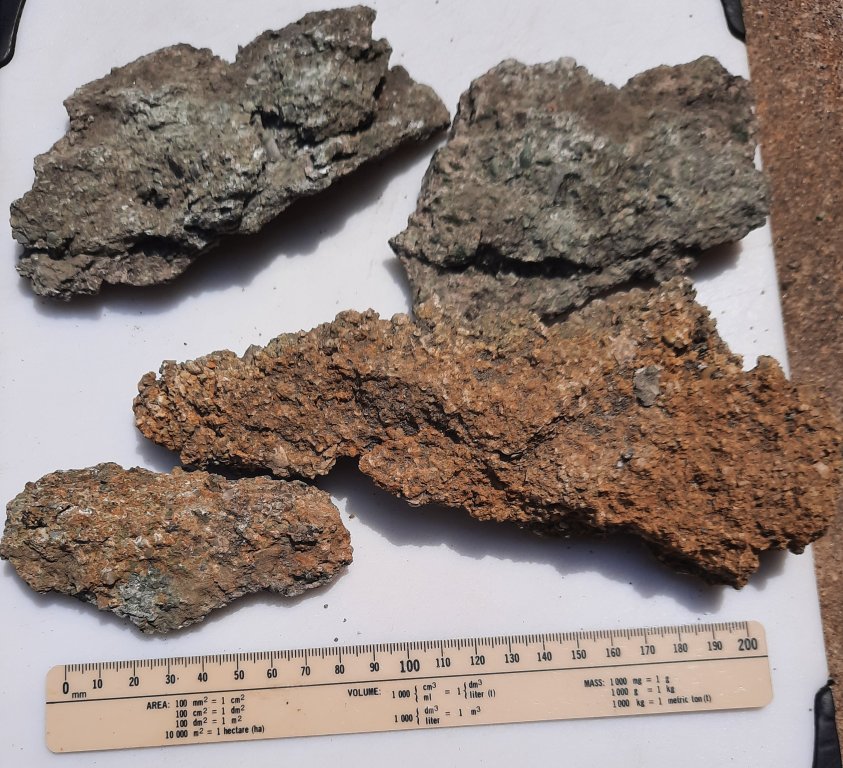
Two teeth in the matrix on this rock. The top one was still attached to the matrix, but the bottom one was loose inside a hole that it looked like someone chiseled. So much for my secret spot.
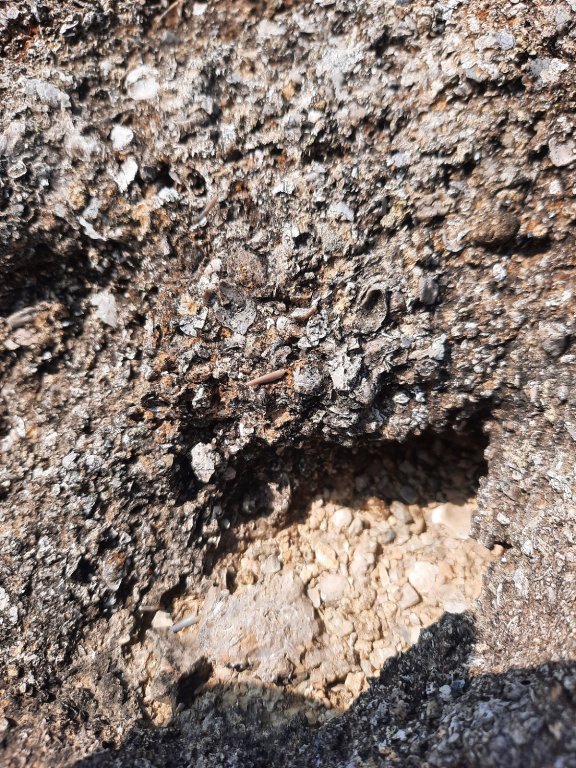
Some of the matrix I brought home had teeth that weren’t too hard to spot.

Here are the 20 teeth I’ve found so far. I’m going to have to do some research to identify some of them. The Kincaid Formation and Paleocene period are both new to me. The surprise of the day was a single small Ptychodus tooth I found. Since Kincaid is 66 to 56 mya, and Ptychodus supposedly went extinct 85 mya, I didn’t expect to see any today. But this one was in the same matrix the other teeth came from. It appears I found a tooth from one of the last of the Mohicans. It didn’t take too long after I posted about this in The Fossil Forum yesterday for someone to suggest that I had likely found the Ptychodus tooth elsewhere and accidentally mixed it in with yesterday’s teeth, but I don’t think so. I have collected no other matrix that breaks apart as easily as this, and I broke the Ptychodus tooth out of a piece of matrix after I got home. It will be interesting to see if I find any other Ptychodus teeth in the rest of the matrix.
If I thought last week’s teeth were small, then these teeth are REALLY small. But I had a blast finding them.

And I have lots more matrix to go through. I’ll check back and update this post after I’ve been through it. Thankfully, it’s nowhere near as hard as most matrix I seem to bring home.

09/03/21 Update: I’ve made it through quite a bit of the matrix. As advertised for Kincaid, this matrix has lots of micro teeth. Between my new prescription eyeglasses and my magnifying lamp I bought, I can see them much better than I ever would have been able to before. So I’m researching the care and feeding of microfossils. I have ordered a digital microscope. Hopefully when it arrives, I’ll be able to post some decent photos of these teeth. I’m beginning to see the attraction of microfossils. What looks like nothing more than a speck to the naked eye is a beautiful tooth under that magnifying lamp.

09/04/21 Update: I’ve gotten in my digital microscope and started taking photos of the teeth. Here is one of the smallest, no more than a speck to the naked eye.

And here is one that reminds me of how many are broken and how many need to be cleaned up. I guess I need to research cleaning recommendations for teeth this small. And I need a new ruler, without so many scratches, no doubt.

09/05/21 Update: I made a cleaning solution of water, hydrogen peroxide, and Calgon and soaked the teeth for an hour. Here is that same tooth afterward. Guess it’s time to make myself a gallery.
